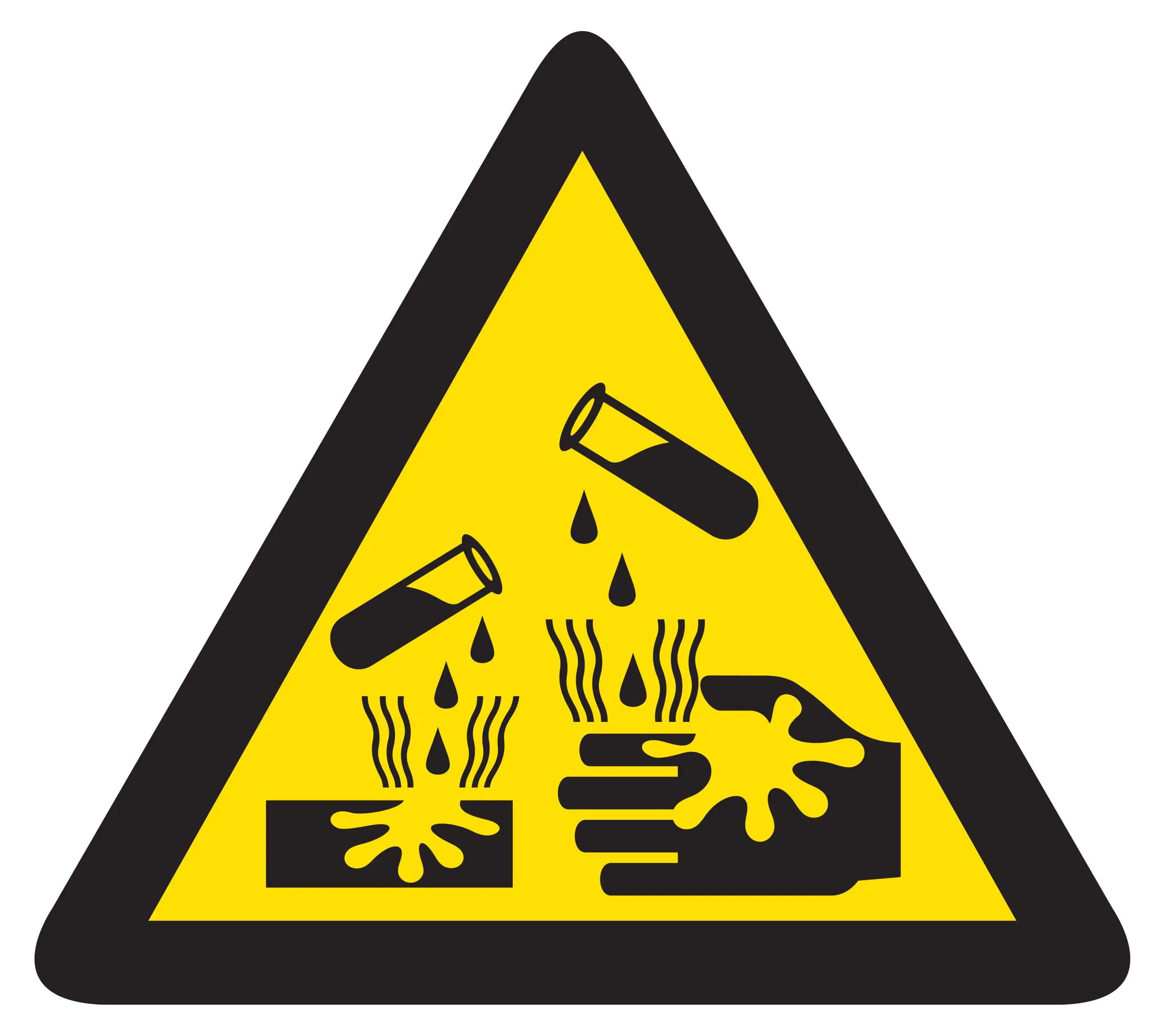Toxic chemicals will harm you if accidentally spilled on your skin, inhaled, or swallowed. The type and severity of injury one can get from a chemical burn depend on the strength of the chemical and the duration of exposure. Contact with chemicals will continue to damage skin tissue until washed away, or sometimes remain harmful despite flushing the area.
In this article, you’ll learn what to do after a chemical burn depending on the cause, and how you can take legal action if necessary.
Various Symptoms of Chemical Burns
You may not be able to identify immediately a chemical burn. Chemical burns happen when caustic substances (think acids and bases) damage body tissue, similar to a burn from heat. Symptoms vary depending on the affected area of the body. Even if you aren’t sure that your injury was caused by chemical exposure, it’s always best to take precautions.
Symptoms of a chemical burn include:
- Inflammation at point of contact
- Pain or numbness at point of contact
- Black or blistered skin
- Blurred vision or other complications, if exposed to eyes
- Shallow or painful breathing and/or lightheadedness, if inhaled
- Seizures, irregular heartbeat, coughing or headaches, if swallowed
- In most severe cases, cardiac arrest or death
How to Respond to Different Chemical Burn Injuries
Whether mild or severe, it’s critical not to spread the chemical while treating the injury. Before treating, make sure you are wearing clean protective gear, such as gloves or a mask. Avoid any further injury by not touching the affected area and your face.
Be sure to seek medical attention whenever you’ve been harmed by chemical exposure. Identifying the name of the chemical and a small amount of the substance that you think burned you will ease the transfer of care to first responders. Knowing what, specifically, the exposed chemical is will expedite further medical care and recovery from your injury.
Treating a Chemical Burn on Your Body
- Remove contaminated clothing: carefully remove any clothing or jewelry that came in contact with the chemical without spreading it elsewhere
- For a dry chemical powder: brush off any large particles
- For a wet chemical substance: DAB, do not rub, affected area with an absorbent towel. Rubbing will spread the chemical and burn more skin.
- Safely throw out any cleaning materials
- Rinse affected area under clean water for at least 10 minutes
- Loosely wrap the affected area with gauze and seek medical attention
Examples of this injury occurring could be:
- Mishandling or spilling pool water treatments and getting a chemical burn on your hands
- Attempting to dye your own hair and getting a chemical burn on your scalp
- Mishandling bleach and getting a chemical burn on your skin
Treating Chemical Inhalation
- Immediately remove yourself or the victim from the source of exposure and seek clean air. Remain calm and try not to revisit the area of the source until cleared by an expert
- Remember to identify the chemical and observe for any persistent symptoms
- Call for medical services. The victim may need intubation or other treatments but will certainly require a professional evaluation and medical clearance
Examples:
- Inhaling cleaning chemicals like ammonia can lead to serious complications and chemical burns to your sinuses. Be careful to NEVER mix ammonia and bleach as it creates a compound toxic enough to kill you.
- Breathing noxious fumes from recently sprayed pesticides
Treating a Chemical Burn in Your Eye
- Call for assistance from a bystander and request someone calls 911
- Flush the eyes immediately with fresh water. It’s critical to remove the harmful substance as soon as possible to begin restoring the natural pH of the eye. Studies show that it takes as much as 5 gallons of water and 20 minutes to adequately flush the eye.
- Cover the non-affected eye to prevent exposure. Tilt the head to the affected side so the water flows off the face, not spreading to the other side. You may need to manually hold the eye open.
- Sterile fluid to irrigate the eye is preferable, but use any non-toxic fluid available to you, such as tap water. Rinsing the eye as soon as possible is the most critical action you can take for this type of burn.
- Standard ongoing treatments include prescribed eye-drops for lubrication, protection from infection, pain relief, and steroids to rehabilitate and prevent further damage to the cornea. In severe cases, there are surgeries to help repair the eye’s membrane.
Examples:
- Applying bug repellent and spraying it into your eye
- Using household cleaners or detergents and rubbing your eyes before washing the chemicals from your hands
Treatment for Swallowing a Chemical Substance
- If a toxic chemical is swallowed, there’s risk for internal injury in addition to burning in the throat and esophagus. Even if you are not sure the swallowed substance was toxic, call poison control immediately.
- A specialist from poison control will help the caller proceed, either advising you call 911 or rush the victim to the emergency room
- Be sure to inform the specialist of the name of the chemical and the amount swallowed
- Do NOT induce vomiting unless instructed to do so. The specialist may advise the victim to drink water or milk, unless the victim is experiencing symptoms that make it difficult or impossible for him or her to do so.
Examples:
- A child mistakenly consuming cosmetics or personal care products
- Drinking groundwater contaminated with pesticides from a hose
- Consuming food with chemical residue on your hands, or in an area where toxic chemicals are handled
Making a Claim for a Chemical Burn Injury
Knowing who to sue for negligence in a personal injury case depends on the circumstances of the chemical burn. Important factors of a claim include where the victim was injured and how the exposure occurred. Like most personal injury claims, the statute of limitations is three years. This means a burn victim has three years from the day he or she sustained or became aware of the injury to take legal action.
Product Liability Claims
If a product causes injury because of its poor design, a defect in manufacturing, a performance malfunction, or breach in warranty, the injured person can seek recovery from various sources. Those held responsible can include everyone involved in providing the product to the consumer: factory/parts suppliers, designers/manufacturers and retailers.
3 Main Types of Product Liability Lawsuits
- Defects in Design: In these cases, plaintiffs have to prove that the manufacturer was negligent in designing the product to be safe.
- Defects in Manufacturing: These cases are for when a well-designed product was defectively produced. A plaintiff has to prove that these defects caused injury.
- Defects in Warnings or Warranty: These claims are for when a company is negligent in warning of the product’s danger, if they put inadequate warnings, or no warnings at all. One can also sue for breach of warranty if a product fails to perform as warranted and causes injury.
An example is purchasing a device that ended up leaking battery acid and injuring skin. A claim could be made to the manufacturer if the battery had a fault in design, or against a retailer who sold the defective battery.
Premises Liability Claims
A property owner could be liable for a chemical burn if the injury was sustained on their premises. To build a successful premise liability claim, plaintiffs need to prove:
- The victim was lawfully on the property as an invitee, guest or customer.
- The owner neglected or should have been aware of an unsafe condition, resulting in failure to improve the condition.
- The negligence contributed to the injury.
An example would be attending an event in a building recently fumigated for insects, inhaling the fumes and requiring hospitalization. The property owner is responsible for all people permitted on the premises, otherwise called “duty of care, and could be held liable for resulting injuries.
Worker’s Compensation
If injuries are sustained on the job, a worker’s compensation claim may be made before filing a personal injury lawsuit. If on-the-job burns happen to you, document the incident and any medical care you receive, being sure to follow all the strict deadlines for a worker’s compensation claim.
Unlike regular personal injury claims, the statute of limitations for worker’s compensation is two years. This means you have two years from the date of the accident, or when you were aware of the injuries, to make a worker’s compensation claim. Don’t hesitate to make your claim. Worker’s compensation benefits can cover employees regardless of who is found to be at fault for their injuries.
There are other legal options in the event of someone else’s negligence causing an injury, or if compensation doesn’t fully cover injury-related expenses. Workers who are injured on the job can still file a personal injury lawsuit while collecting worker’s compensation.
For instance, if you were injured by the acid from a defective battery used to power a device you operate at your job, you could make a claim against the manufacturer of the battery while still collecting worker’s compensation benefits.
Evidence for Building a Strong Case
If you are planning to meet with a personal injury lawyer to build your case, consider preparing the following materials:
- Documentation of all medical services related to your injury. Seek medical attention IMMEDIATELY. The more time between your accident and medical care, the harder it can be to make a strong case.
- Pictures of your injury and environment where you were exposed. Continue to take pictures as you heal or get worse over time. The legal process can take years and it’s important to have relevant evidence, especially if brought to trial.
- Your account of what happens should be written shortly after the accident. Don’t rely on your memory alone throughout the case. Document everything that happens, including witnesses and what any bystanders may have said. Every detail can potentially help strengthen your case.
- Keep a journal about any pain and suffering brought on by your injury. Write about ways your injury impacted your life in detail. This can help your attorney’s strategy to fight for your compensation.
- Work with your doctors by thoroughly explaining your ailments (for records) and following their orders (for your health). Failing to follow doctor’s orders or missing appointments will seriously weaken your case.
It’s necessary to ensure that whoever caused your chemical burn injury is held responsible for their negligence. Contact Sobo and Sobo to begin fighting for your rightful compensation.
Contact a New York Burn Injury Lawyer
If you or someone you know is currently suffering from a chemical burn injury caused by someone else’s negligence, you may be eligible to receive compensation for your damages. Call 855-468-7626 for a free consultation with a chemical burn injury lawyer at Sobo & Sobo.
With over 50 years of experience helping clients win personal injury cases across the Hudson Valley and the Bronx, the team at Sobo & Sobo know how to get you the settlement you deserve to cover all medical expenses, lost wages, and any other damages. Call or visit one of our New York office locations today.




